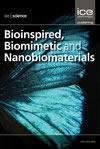韭菜基氧化锌纳米颗粒:合成、表征和生化势
IF 0.6
4区 工程技术
Q4 ENGINEERING, BIOMEDICAL
引用次数: 1
摘要
在本研究工作中,通过绿色合成方法成功制备了洋葱(AC)球基氧化锌纳米颗粒(ZnO NPs)。洋葱鳞茎中存在的植物化合物成功地将Zn+2离子还原并稳定为ZnO NP。进行了液体形式(L-ZnO-NPs)和煅烧形式(C-ZnO-NP)的合成。纳米颗粒(NPs)胶体溶液从透明到黄色的颜色变化,表面等离子体共振(SPR)在350下通过紫外可见光谱分析达到峰值 nm和370 nm和红外光谱显示官能团低于700 nm的波长证实了ZnO NPs的合成。NP的元素组成显示,在C-ZnO-NP和L-ZnO-NP中,锌的分子量分别为66%和61%,而氧的分子量则分别为24%和26%。扫描电子显微镜和X射线衍射图证实了棒状晶体ZnO NPs(30-35 nm),分布均匀。基于2,2-二苯基-1-苦基肼(DPPH)测定的C-ZnO-NP和L-ZnO-NP的抗氧化潜力分别被记录为72%和65%的抑制,而过氧化氢(H2O2)自由基清除测定显示,在75 µL浓度。ZnO纳米粒子显示出良好的抗菌、体外抗糖尿病和抗氧化潜力。因此,通过绿色化学方法,洋葱球基ZnO纳米颗粒可以被认为是自由基清除、糖尿病和微生物感染管理科学的创新补充。本文章由计算机程序翻译,如有差异,请以英文原文为准。
Allium cepa-based zinc oxide nanoparticles: synthesis, characterization and biochemical potentials
In this research work, the Allium cepa (AC)bulb-based zinc oxide nanoparticles (ZnO-NPs) were prepared successfully through a green synthesis approach. Phytocompounds present in the Allium cepa bulb successfully reduced and stabilized the Zn+2 ions into ZnO-NPs. Synthesis of the liquid form (L-ZnO-NPs) and calcined form (C-ZnO-NPs) were carried out. The color change of nanoparticles (NPs) colloidal solution from transparent to yellow, the surface plasmon resonance (SPR) peaks by UV-Visible spectroscopic analyses at 350 nm and 370 nm and Infrared spectrum shown functional groups below 700 nm, confirmed the synthesis of ZnO-NPs. The elemental composition of NPs revealed that the molecular weight of Zinc was 66 % and 61 % while Oxygen was 24 % and 26 % respectively in C-ZnO-NPs and L-ZnO-NPs. The scanning electron microscopy and X-ray diffraction pattern confirmed the successful synthesis of rod-shaped, crystalline ZnO-NPs (30-35 nm) with uniform distribution. The 2,2-Diphenyl-1-picrylhydrazyl (DPPH) assay-based antioxidant potential of C-ZnO-NPs and L-ZnO-NPs were recorded as 72 % and 65 % inhibition respectively while hydrogen peroxide (H2O2) radical scavenging assays revealed 62 % and 48 % inhibition respectively at 75 µL concentration. ZnO-NPs showed good antimicrobial, in-vitro anti-diabetic and antioxidant potential. Hence, Allium cepa bulb based ZnO-NPs through a green chemistry approach can be considered an innovative addition to the science of free radical scavenging, diabetes, and microbial infection management.
求助全文
通过发布文献求助,成功后即可免费获取论文全文。
去求助
来源期刊

Bioinspired Biomimetic and Nanobiomaterials
ENGINEERING, BIOMEDICAL-MATERIALS SCIENCE, BIOMATERIALS
CiteScore
2.20
自引率
0.00%
发文量
12
期刊介绍:
Bioinspired, biomimetic and nanobiomaterials are emerging as the most promising area of research within the area of biological materials science and engineering. The technological significance of this area is immense for applications as diverse as tissue engineering and drug delivery biosystems to biomimicked sensors and optical devices.
Bioinspired, Biomimetic and Nanobiomaterials provides a unique scholarly forum for discussion and reporting of structure sensitive functional properties of nature inspired materials.
 求助内容:
求助内容: 应助结果提醒方式:
应助结果提醒方式:


